---------------------------------------------------------
The chicken’s coop & run are by far the biggest investment you will make as a backyard chicken keeper so you will want to give it some thought before purchasing or building one. Having the right design can literally make or break your chicken keeping experience. A well designed, easy to clean coop makes tending chickens a breeze! Chicken coops can come in all shapes & sizes and all budgets. Hundreds of coop plans and ideas can be found online, so let me share with you what I have learned from building several over the course of our chicken keeping journey.
Chickens are addictive. Go bigger if possible
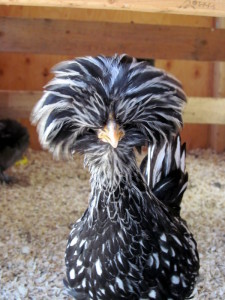
When we first started out, we bought 4 baby chicks. We figured that was plenty. We had read online about chicken math. If you haven’t heard that term, it refers to the addition to your flock in amounts more than you originally planned just because they are so cute and there are so many different breeds. It’s so easy to add more! It’s tempting to squeeze in “just one more.” We didn’t listen. We just went to the feed store, picked out four different chicks, and went home happy with our purchase and built a coop to house those 4 birds.
Two months later, on another trip to the feed store, we saw they had Easter Egg chicks. Chickens that lay blue eggs? Yes please! So we thought just one more couldn’t hurt. For the first year, we were happy with our flock of 5. Then the hatchery catalogs comes in the mail (who put us on that mailing list??). There are hundreds of breeds of chickens – some of them so amazing and unique you just want to collect them all! For year two we ordered some fancy breeds from the hatchery – two Silkies, a Polish and another Easter Egger.
Shortly after the new chicks arrived, we had our very first broody hen. She looked so sad there, wanting to be a mom. Who was I to deny her? Since we don’t have a rooster, we went on Ebay and ordered some fertilized eggs. She hatched out four adorable fuzzy babies. We were good and only kept one – but still that was 10 chickens. So only one year in, we had gone from 4 birds to 10 and we were already adding on to our coop.
Do yourself a favor and go bigger. You won’t regret it. Chickens need about 4 square feet of inside space per bird, and 10-20 square feet of outside run space per bird. You can read more about space requirements here. I recommend when building or buying your coop you plan for 50% more than you starter flock. If you plan to start with 6 chickens, build for 9. Maybe you won’t use it and they will just have a roomy coop…. but I bet you’ll use it!
Chicken coops need a lot of ventilation
Chickens produce a lot of moisture, ammonia, and body heat and if your coop isn’t properly vented your chickens could get very sick or even die. When chickens breathe, they expel a lot of moisture. They also do not urinate, so all of the liquid they would pass is contained in their poop. All that moisture can make the coop very humid. If that humidity can’t escape through vents, you leave your flock open to respiratory disease & frostbite in the winter. Their poop contains a large amount of ammonia. As it builds up, it can really irritate their lungs.

In the summertime your chickens are stuck sweating it out in their warm downy coats. Imagine being stuck sleeping in a tiny room with several of your friends, all dressed in winter jackets, in the middle of August. All that body heat can cause the temperature to rise to dangerous levels, and your chickens could die from heat stroke.
How much ventilation is enough? It will vary in different climates and seasons. In hot summer weather a good rule of thumb is about 1 square foot of ventilation per 10 square feet of floor space. If it is really hot, you might want to consider a barn fan.
Even during the winter, even in the north, even when its 20 degrees below zero, they still need ventilation. Too much moisture coupled with cold temperatures is a recipe for frostbite. click here to read more about frostbite. In the winter, you can close up some of the summer vents, and partially close others. You need to provide air exchange without allowing wind & drafts in, so a panel with a hinge that can close part way is perfect.
Be sure all vents are covered in wire so predators can’t access the coop. A good investment for the coop is a humidity & temperature gauge. Try to keep the humidity between 40%-70% and the temperature below 90 degrees. Having a reliable gauge will help you determine if you have enough ventilation.
Roosting Space
Chickens poop a lot while they sleep, a lot of the mess in the coop is going to be located under the roosts. Some chicken owners have a dropping board under their roosts. The chicken poop falls on the board while the chickens sleep, and can be easily dumped or scooped off, leaving the coop floor much cleaner. Before you begin construction, I highly recommend you finding space for this! When we moved from a small coop to a larger walk in chicken barn I installed a dropping board and I am so happy with it. click here to read more about dropping boards
Roosts should be located away from drafts so the chickens are not shivering all night long. You should plan on about 1 foot of roost space per chicken. Roosts can be made easily from 2x4s. If you live in a warm climate, place the boards so that the narrow end is facing up. This will allow for the most airflow around the chickens. If you live in a cold climate, place the wide end up to allow the chicken’s warm belly to cover her toes while she sleeps.
Hang the roosts using deck hanger brackets. This lets you easily remove the roost for cleaning.

Think about cleaning when designing your set up
Having a coop & run you can walk into will make cleaning time much easier, but a large set up isn’t practical for everyone. If you don’t have space or money for this, be sure you have large access doors to make cleaning time quick & easy. My first coop was 4 ft x 8 ft and not tall enough for me to walk into, but both 4 ft ends opened almost completely so I could just push the shavings from one end out the other.
The material you use on the floor of your coop is very important for cleaning. Bare wood is the absolute worst choice. It is pourous, absorbing spilled water and crusted on poop. It’s hard to clean and eventually all that moisture will rot the wood. If your coop has wood flooring, cover it with easy to clean vinyl tiles or sheets. Vinyl is super easy to clean and moisture resistant. Dirt floor provide excellent drainage so are also a good choice. With dirt floors, ensure that you bury hardware cloth around the perimeter to discourage rodents from digging in. Concrete floors have the same issue as wood, it won’t rot but is pourous and hard to clean. I would recommend covereing concrete with vinyl.
Most walls will be made of wood. Painting the inside of your coop with a light colored, high gloss paint will make wiping them down super easy. It will also protect the wood, making your investment last longer. Another option is to hang a glossy contact paper wallpaper or to use glossy feed bags as “wallpaper”.
Food & Water Placement
Be sure you have easy access to their food & water so you can easily fill them. Having them raised off the floor will keep shavings and poop out of the water. If you live in a climate where the weather regularly drops below freezing you need to have a plan for keeping your chickens in fresh water. You can either purchase a chicken water heater (a base that you put your water on and it will keep it just above freezing), a heated pet bowl, or you can change out the water a few times a day to keep it from freezing. click here to learn more about keeping chicken water from freezing
You can choose to keep the feed & water inside the coop or inside the run. Both have their advantages & disadvantages. You just have to decide which one works best for your situation. In either scenario, be sure you are storing extra feed in metal cans. Rodents will be attracted to the feed and can chew through a feed bag or plastic container.
Pros/Cons of keeping water and feed in the coop: Chickens have 24/7 access to their food and water, but they will spill both in the coop which can weaken the floor and make a general mess. Having feed and water out all the time can attract rodents who might decide to make their home inside your coop. The feed and water take up valuable floor space; this is especially a consideration if your coop is small. Feed is protected from the elements.
Pro/Cons of keeping water and feed in the run: Chickens will have to be without feed and water overnight (they will be fine, just be sure you let them out early in the morning). Spilled water just absorbs into the ground and spilled feed just gets scratched around, so there is less mess inside. Open feed and water attracts rodents. If you keep your feed in the run, please put it in a metal can and dump the water dish overnight when rodent activity is highest. Keeping it outside saves space in the coop. Feed can get moldy if left out in the rain, you will want to put it away in bad weather or have a sheltered place in the run for it.

Nest boxes
You don’t need to have a nest box for every chicken. You should plan on 1 box for every 4-5 hens; they don’t mind sharing. A nest box should be a quiet, safe place where the hens can retreat to. Some people even hang curtains over the boxes to give the hens some peace. Nest boxes that are 16 inches x 16 inches are nice & roomy for when two birds decide they need to be in the same box at the same time. Having convenient access from the outside of the coop to the nest boxes makes collecting eggs quick & easy. Click here to read more about building nest boxes.
Don’t rely on chicken wire for keeping out predators
Use hardware cloth on at least the bottom portion of your run and to cover the windows/vents in your coop. The wire is stronger and the holes smaller, so predators can not bend it to gain access. It is a lot more expensive than chicken wire. If you can not afford to do the entire run in hardware cloth, at least do the lower 2 feet. You should also dig a trench 2 feet down all the way around the run and bury hardware cloth. This will prevent animals from digging in, or chickens from digging out.
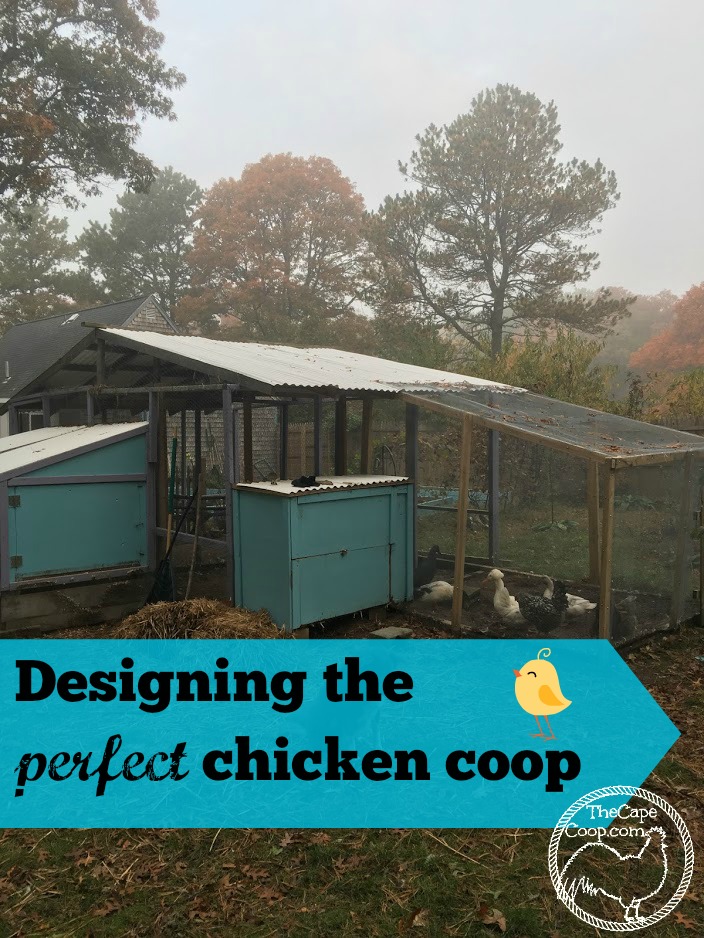

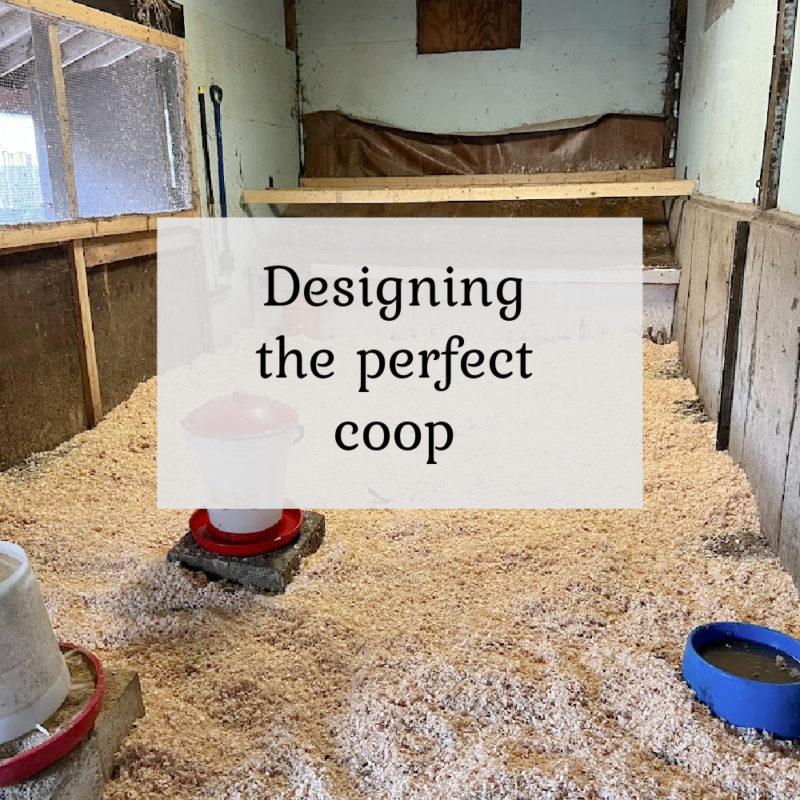

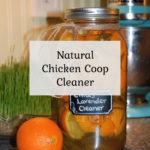
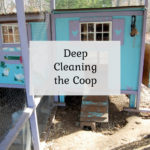
Jefferson Kale
Wednesday 5th of March 2025
I've had chickens before and the best idea I've had for keep the chickens feed... And this is absolutely free to do... Is look someone who's got a broken chest freezer... And if it looks even better... And use it for feed storage; 1# they're free, 2# they're usually white so during the summer the feed stays cool, around 70° on a 110° day, 3# I was able to store about 5 to 7 bag's of feed completely dry and 4# I had no problem with bugs getting in the feed. Why no one has ever thought about using a chest freezer that's free is beyond me, I had two chest freezers and it couldn't have worked any better.
Liz
Thursday 6th of March 2025
That is such a great idea! It's so hard to find a place to store several bags when you stock up. Brilliant!
Erika Luke
Monday 18th of May 2020
I would love some advise! I'm all over the go big thing! We started with 8 chicks from TSC (we knew one wasn't gonna make it but I couldn't leave him to die alone in the store all alone at night). I then went about researching chickens a little more, and happened upon Cackel Hatcheries mini surprise box and I currently have 10 awkward teenage chicks, 2 ducks, and my surprise box got here last week which included 25 surprise breed chicks, 2 ducks and a turkey! We are almost done with our run/coop but before we finish im thinking about coop size! Our run is 12'x24'(6+ feet tall) my calculations from reading up on it say thats enough room for my 40 birds. My coop was slated to be 4'x8 feet (5 feet tall) with nesting boxes on the outside, is this big enough? I live in the foothills of the Central Valley of California our winter Temps are around 40-50 degrees with freezing tems only at night, I figured they would be in the run most of the day in the winter too? So the coop is just for sleeping? Before we finished this coop do I need to.make it bigger? Or am I on the right track and the chicks will be outside in the winter and summer only sleeping in the coop at night?
Liz
Monday 18th of May 2020
Wow! You went big really fast lol! So if I have this right, you have 35 chickens, 4 ducks and 1 turkey? That is a lot of birds for that size run/coop. I don't know much about turkeys, but what I normally recommend for chickens & ducks is least 10 square feet per bird outside run space IF they are also allowed to free range occasionally and 20 square feet per bird if they are not allowed to free range. Your current run is 288 square feet, with the 10 square feet recommendation you are looking at needing 400 square feet for 40 birds. If these birds are not ever going to be out free ranging, 20 sq feet is really better for the run - at which case you are are looking at a 800 square foot run (so almost three of the current run you have). Can you go smaller? Yes you can, but when birds are kept in too close quarters it can lead to fighting. It will also make the manure harder to manage when it's concentrated in a too small area. You will want a decent size area where they can eat & drink, dust bathing areas. Will you have a little pool for the ducks? Indoors I recommend 4 square feet per bird, which would mean 160 square foot coop and your current coop is only 32 square feet. I don't see how 40 full grown birds could even physically fit in there all at once. You will be locking all the birds up in the coop each night to keep them safe from predators, so they will need to all be able to fit in there at once with the door closed. You will need roost space of about a foot for each of the chickens (and turkeys i believe also roost) and a space where the ducks can nest on the ground (not under the roosts so they don't get pooped on all night). I know you don't get harsh winters there, but they will still go in the coop during the day to escape rain & wind and to lay their eggs. For 40 birds you are looking at needing a good sized structure - something like a 10x16 shed. I think unfortunately, you might need to really rethink your coop & run area. You might also like these articles for planning your flock: https://thecapecoop.com/how-much-space-do-chickens-need/ and this one on keeping chickens & ducks together https://thecapecoop.com/raising-chickens-ducks-together/
Robin
Wednesday 29th of April 2020
Hi I was wondering if you could give me some advice? We live in Pahoa, Hawaii and are thinking of building or buying a coop, it rains a lot here and is very humid, the temperature rarely ever gets below 65 and pretty much stays at 75-85 most of the time. My question is will I need to build a certain type of coop in order to keep the chickens happy?
Liz
Thursday 30th of April 2020
You will want a lot of ventilation. I have seen lots of people in warm humid climates like yours actually just use hardware cloth for walls and then have awnings to keep out the rain
Sipho
Wednesday 28th of September 2016
Very informative.